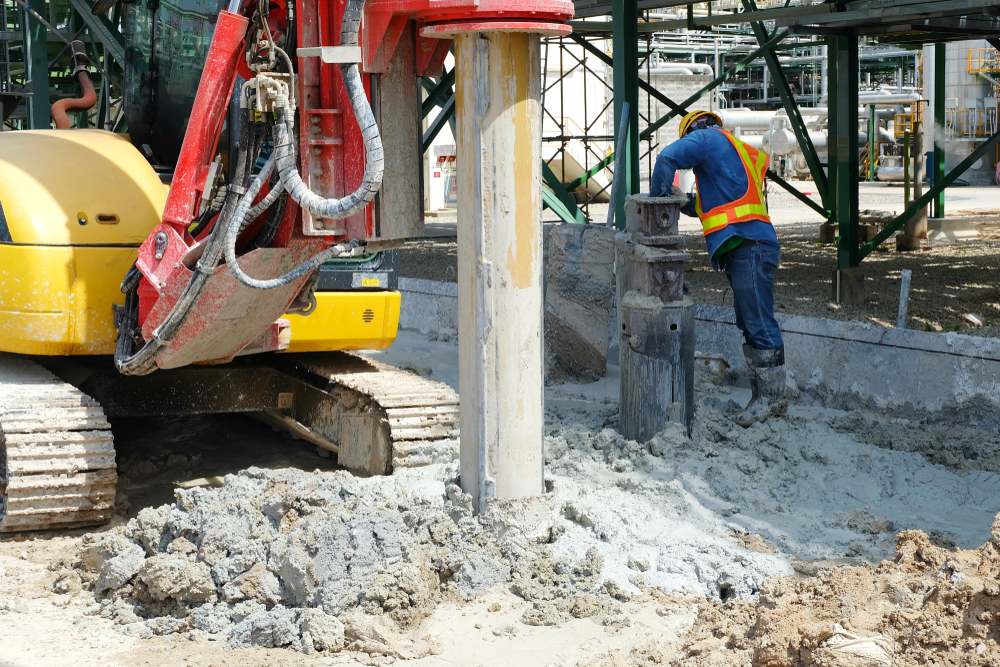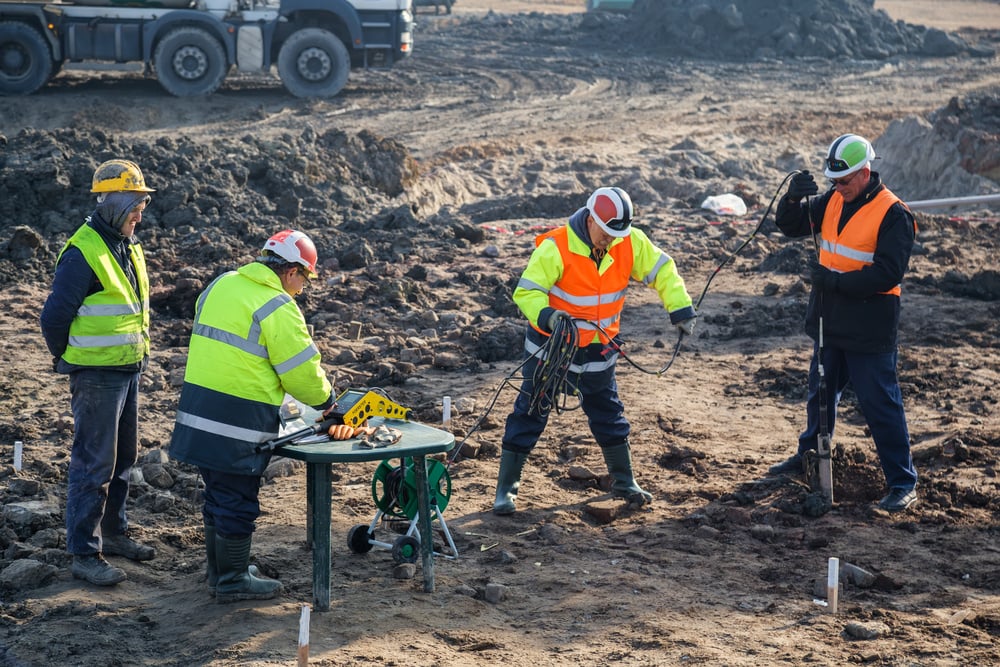Top Guidelines Of Geotechnical Engineering For Construction Projects
Top Guidelines Of Geotechnical Engineering For Construction Projects
Blog Article
Geotechnical Engineering For Construction Projects Can Be Fun For Everyone
Table of ContentsHow Geotechnical Engineering For Construction Projects can Save You Time, Stress, and Money.Geotechnical Engineering For Construction Projects Can Be Fun For EveryoneGeotechnical Engineering For Construction Projects Fundamentals ExplainedHow Geotechnical Engineering For Construction Projects can Save You Time, Stress, and Money.9 Easy Facts About Geotechnical Engineering For Construction Projects ExplainedHow Geotechnical Engineering For Construction Projects can Save You Time, Stress, and Money.The 25-Second Trick For Geotechnical Engineering For Construction Projects
Principles and Method of Ground Improvement. Ground Renovation Concepts And Applications In Asia. Layout evaluation in rock auto mechanics.Cengage Discovering, Stamford, 666 p. Atkinson, J., 2007. The mechanics of soils and foundations. Taylor & Francis, N.Y., 442 p. Drifting Offshore Wind Turbines: Actions in a Sea state Pareto Optimum Layouts and Financial Evaluation, P. Sclavounos et al., October 2007. Nicholson, D, Tse, C and Cent, C. (1999 ). The Observational Technique in ground engineering concepts and applications.
Not known Facts About Geotechnical Engineering For Construction Projects
Laboratory and area testing plays a critical role in this procedure. By extracting examples from the earth's subsurface and using a collection of tests, geotechnical engineers can predict the behavior of soil layers and review their suitability for numerous construction endeavours. The significance of geotechnical engineering in civil design can not be overstated, attributable to a number of variables: The preliminary action in any kind of geotechnical study entails figuring out the soil type at the building site.
Recognizing these qualities makes sure that just appropriate dirt kinds are picked for the growth, thereby averting prospective architectural failures. The foundation works as the bedrock of any type of building and construction job. Selecting the appropriate foundation type is a decision that depends upon the comprehensive evaluation provided by geotechnical design. This makes sure the long life and stability of structures by fitting the tons they will bear.

Geotechnical website examination is an important action in the planning and execution of any construction task. It involves the collection and evaluation of information associated to the physical residential or commercial properties of dirt and rock under a suggested building website. This details is important for the design and building and construction of risk-free, steady, and sustainable structures.
Little Known Questions About Geotechnical Engineering For Construction Projects.
In this blog, we will certainly explore the relevance of geotechnical site investigation, its numerous components, and exactly how it profits construction jobs. Geotechnical site examination, likewise understood as subsurface exploration, involves a series of activities aimed at figuring out the soil, rock, and groundwater problems at a building site. The main purposes are to identify possible geotechnical risks, examine the engineering residential or commercial properties of subsurface products, and supply recommendations for the style and building of structures, maintaining wall surfaces, and other structures.
The desk research study assists in recognizing possible geotechnical issues and intending the subsequent fieldwork. This entails observing the topography, water drainage patterns, existing structures, plants, and any indications of instability or erosion.
Geotechnical Engineering For Construction Projects for Beginners
Superficial examination pits are dug deep into to directly observe and sample the soil and rock. This technique is valuable for examining the upper layers of the subsurface and determining near-surface threats. Non-invasive geophysical approaches, such as seismic refraction, ground-penetrating radar (GPR), and electric resistivity tomography (ERT), are made use of to map subsurface conditions and detect anomalies.
Soil and rock examples gathered throughout the area examination are subjected to lab testing to establish their physical and mechanical homes. Common research laboratory tests consist of grain dimension analysis, Atterberg restrictions, compaction tests, triaxial shear examinations, and consolidation tests. These tests supply vital information for geotechnical evaluation and layout. The data gathered from the workdesk research study, site reconnaissance, field investigation, and lab testing are examined and translated to create a comprehensive understanding of the subsurface problems.
The main advantage of geotechnical site examination is guaranteeing the safety and security and over at this website security of structures. By recognizing the subsurface problems, designers can develop foundations and other structural elements that can stand up to the lots and environmental forces they will go through. This lessens the danger of negotiation, subsidence, and architectural failing.
The 8-Minute Rule for Geotechnical Engineering For Construction Projects
Understanding dirt attributes can guide the selection of excavation techniques, dewatering techniques, and ground improvement actions. This makes sure efficient and safe construction practices. Geotechnical site investigations are frequently required by building codes and regulations. Abiding by these requirements guarantees compliance with lawful and safety and security standards, staying clear of possible legal responsibilities and job delays.
This details is vital for task supervisors, architects, and specialists in creating reasonable routines, spending plans, and contingency plans. Geotechnical Engineering for Construction Projects. Skyscraper Structure in a Coastal AreaIn a coastal city, a skyscraper residential building was intended on a website with thought loose sand deposits and a high water table. A detailed geotechnical investigation, including borehole drilling, CPT, and geophysical surveys, was performed
The smart Trick of Geotechnical Engineering For Construction Projects That Nobody is Discussing
Based upon these searchings for, the foundation design was changed to include deep pile foundations expanding right into steady strata, and ground enhancement methods, such as vibro-compaction, were executed to mitigate liquefaction dangers. This aggressive approach made certain the safety and security of the structure while preventing costly post-construction removal. Facilities Development on a Sloping TerrainA significant infrastructure project, entailing the building and construction of a freeway and bridges, was intended on an uneven surface with high slopes.

The Leaning Tower of Pisa (Italy), an iconic architectural wonder, is infamous for its unintentional tilt from considerable geotechnical concerns. The tower's foundation was improperly developed to handle the soft, unsteady soil under it, leading to unequal negotiation and its distinctive lean. Our globe is populated with excellent infrastructure projectsfrom towering high-rises to sprawling bridgesall standing statement to the advancement of the different construction tools and approaches readily available.
Geotechnical design is a specialized area within civil engineering that focuses on researching the behavior of earth products. This branch delves deep right into the groundinvestigating how the pop over to this site dirt, rock, and groundwater at a building and construction site can influenceand be affected bythe framework that we put up on and into them. Prior to a single brick is laid or a concrete foundation put, geotechnical designers probe right into the earthgathering essential data regarding the website's soil structure, rock framework, and groundwater levels.
Our Geotechnical Engineering For Construction Projects Diaries

is a tool made use of to evaluate the integrity and load-bearing capacity of stacks throughout installation, leveraging the concept of wave propagation. It optimizes construction efficiency by providing real-time examinations, thus ensuring risk-free and efficient stack foundations. Among the functional applications of geotechnical engineering entails deciding and carrying out the right methods for structure building.
Stack driving represents even more than the plain act of putting architectural components into the ground. On the contrary, it is a meticulously orchestrated procedure of transferring a structure's tons past the much less secure soil layers closer to the surfacedown to the a lot more substantial strata that lie underneath. In the situation of stack driving, think about just how geotechnical designers expertly utilize this method to equally distribute the framework's weight.
Report this page